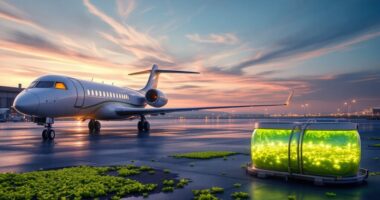Modern buildings combine high-tech and passive strategies for energy efficiency. Triple-paned windows and continuous insulation create tight building envelopes, while balanced ventilation with heat recovery maintains air quality without energy waste. LED lighting, occupancy sensors, and daylighting reduce electricity demands. Integration of renewables like solar panels transforms buildings from energy consumers to producers. Smart technologies optimize operations for maximum efficiency. These principles deliver both environmental benefits and significant operational cost savings.

The humble thermostat, quietly governing our indoor climate, represents just the tip of the iceberg in the vast world of building energy efficiency. Behind that unassuming wall-mounted control lies a complex ecosystem of interconnected systems, each working in concert to create comfortable, sustainable spaces that sip rather than guzzle energy resources.
Building envelope optimization—think of it as wrapping your building in a high-tech thermal blanket—forms the foundation of energy efficiency. Continuous insulation and triple-paned windows act like a coffee thermos for your building, while air tightness prevents your precious heated or cooled air from making a hasty exit. Thermal bridges (those sneaky pathways allowing heat to escape) are like leaving the refrigerator door open—a recipe for wasted energy and potential mold parties in your walls. Effective conservation planning begins with a thorough assessment of current energy usage patterns to identify high-impact improvement opportunities.
Your building’s thermal envelope isn’t just insulation—it’s your first line of defense against energy waste and unwelcome moisture intrusions.
Ventilation systems have evolved beyond simply exchanging stale air. Today’s balanced ventilation with heat recovery is like having a thermal bouncer that says, “You can leave, air, but your heat stays here!” Meanwhile, high-efficiency HVAC systems and geothermal heat pumps extract warmth from the earth itself—nature’s underground radiator. Modern HVAC solutions benefit from zoning systems that divide buildings into independently controlled comfort areas. This approach combines both operational efficiency and conservation practices to maximize energy savings throughout the building’s lifecycle.
Lighting has undergone its own revolution. LEDs use a fraction of the energy of their incandescent ancestors, while daylighting techniques harness free sunshine. Occupancy sensors guarantee you’re never illuminating an empty room—the equivalent of your dad’s old “Why is every light in the house on?” complaint, but automated.
The integration of renewables transforms buildings from energy consumers to producers. Solar panels, once clunky appendages, now seamlessly integrate into building materials. Add smart building technologies—the digital orchestra conductors of efficiency—and you’ve got buildings that practically manage themselves, predicting needs before they arise.
Water efficiency completes the sustainability picture, with low-flow fixtures and greywater recycling dramatically reducing consumption. When all these elements converge through thoughtful design principles, buildings transform from resource-hungry structures into balanced, efficient systems that respect both comfort and planet.
Frequently Asked Questions
How Do Climate Zones Impact Energy Efficiency Design Choices?
Climate zones fundamentally shape energy efficiency strategies in buildings. They determine insulation requirements, window specifications, and HVAC system selection. In cold regions, high R-value insulation and efficient heating systems take priority, while hot climates need solar-reflective materials and cooling-optimized designs. Mixed climates require balanced approaches.
Local precipitation patterns influence moisture control strategies, while available renewable resources vary by region. Smart designers leverage these regional differences to create buildings that work with, rather than against, their environment.
What Is the ROI Timeline for Major Energy Retrofit Projects?
ROI timelines for major energy retrofit projects vary considerably based on project scope and existing conditions. Simple upgrades like LED lighting typically see payback within 2-3 years, while HVAC controls and building automation systems range from 1-4 years.
Deep retrofits achieving 40-80% energy savings usually require 5-10 years to recoup investments. Factors influencing ROI include initial costs, baseline efficiency, local energy rates, available incentives, and proper implementation. Strategic bundling of quick-payback measures with longer-term investments optimizes overall returns.
Can Historic Buildings Achieve Modern Energy Efficiency Standards?
Historic buildings can indeed achieve modern energy efficiency standards, though not without challenges. Their inherent features like thermal mass and natural ventilation provide advantages, but retrofitting requires finesse.
Using minimally invasive technologies—smart systems, window films, and carefully integrated renewable energy—preserves architectural integrity while boosting performance.
With specialized approaches guided by adaptive standards like modified LEED certifications, these venerable structures can reduce their energy footprint while maintaining their historic character.
How Do Occupant Behaviors Affect Building Energy Performance?
Occupant behaviors drastically influence building energy performance. Research shows these actions can triple energy use in homes and cause 80% increases in offices. Daily decisions like adjusting thermostats, operating windows, controlling lights, and using appliances directly impact consumption patterns.
Individual comfort preferences, schedules, cultural factors, and awareness levels shape these behaviors. Smart strategies like eco-feedback systems providing real-time data can reduce energy use by 5-15%, while behavioral nudges and gamification effectively promote conservation habits.
Are There Tax Incentives for Commercial Energy Efficiency Upgrades?
Several tax incentives exist for commercial energy efficiency upgrades. The Section 179D deduction offers up to $5.00 per square foot for qualifying projects that substantially reduce energy costs. This applies to lighting, HVAC, and building envelope improvements.
Businesses can also leverage the Section 48 Investment Tax Credit for renewable energy systems, with rates between 6-30%. Additionally, tax-exempt organizations have direct pay options, and businesses can combine federal incentives with state and utility rebate programs for maximum savings.









